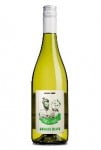Creation Wine Dinner High Timber Restaurant London Monday 5th September 2016
Carolyn and Jean–Claude Martin, both coming from winemaking families, clearly have wine in their blood. Carolyn was brought up in the South African Cape while Jean Claude originates from Switzerland. It was unsurprising a forgone conclusion, therefore, that they would make and sell wine together. The dilemma was, perhaps, in which beautiful country it would be, Switzerland or South Africa.
One of the key differences, and perhaps the deciding factor, between both countries is regulation. When Jean–Claude wanted to plant Sauvignon Blanc in a certain area in Switzerland strict regulation and the courts prevented him from doing so. Switzerland’s loss was South Africa’s gain, and in 2002 the couple decided create a wine estate in the beautiful area of Hemel–en– Aarde in the Overberg district of South Africa, and Creation Wine was born. Regulation here on grape plantings is far less restrictive, resulting in what could be described as a ‘rainbow nation of grapes’ being planted. At the Creation vineyard Chardonnay, Pinot Noir, Sauvignon Blanc and Semillon live in harmony with Merlot, Syrah, Grenache and Petit Verdot. Nonetheless not all varieties wanted to come to the party with Cabernet Franc misbehaving and asked to make an early exit.
Climatically South Africa and Switzerland may appear poles apart; however summer temperatures in Hemel–en– Aarde are usually around 26°C, with very few days in excess of 30°C. Furthermore the night time temperature here drops a massive 12°C, therefore, like Switzerland, it can be considered a cool site. On the other hand despite there being snow-capped mountains in Hemel–en– Aarde, the winters are not as cold as Switzerland can experience.
One extremely important climatic influence in Hemel–en– Aarde is the wind which blows in from the sea. At times this wind is so sudden and so cold that visitors relaxing outside at midday, enjoying he sun, have to rush inside 10 minutes later to warm up when the wind starts to blow. That said the wind is hugely helpful in protecting the grapes from both heat and disease, but on the other hand the production of botrytised wines is not an option.
The tasting room is a very key part of the wine estate, accounting for 30% of sales. With immediate payment and without carrying third party margins, this is the most lucrative sales channel. Nonetheless running a food and wine tasting room 363 days a year is not a cheap exercise, especially as the tasting room has a staff of 60, with several having WSET qualifications. Moreover, wine is served to visitors from varietal specific Riedal glasses. The result of all this care is that the tasting room welcomes 60,000 visitors annually, and has won the KLINK Wine Tourism Award for Best Food and Wine Pairing on a Wine Farm three times. This is a clear example of how seriously South Africa is taking wine tourism, supported now by the Government, which has made wine tourism a national priority.
While over regulation may be a problem in Switzerland, this does not mean there are no problems in the South African wine industry, a problem long associated with South African vineyards is viruses in vine stock. To avoid viruses Creation Wines worked in conjunction with Vititec, a nursery in Paarl, to plant the first virus free vineyard in South Africa post-apartheid. Additionally the vineyards are regularly tested to ensure this status is maintained. So now those viruses can be eliminated what are the important issues going forward for the South African industry? Carolyn is clear; she believes that a major issue is security of grape supply. There has been a strong move to ‘Terroir by tractor’ where wine makers do not own vineyards but source the best grapes direct from growers. These grapes are often from old bush vine dry farmed vineyards. As less than 1% of vines in South Africa are over 30 years old growers of these vines can ‘name their price’ can sell to the highest bidder, furthermore the contact system between grower and winemaker is not always as robust as in Europe. The result of this can be winemakers paying ‘over the odds for grapes’ which can make the resultant wine uneconomic.
We tasted through a range of Creation wines over dinner and there is clear house style. The wines all have fresh natural acidity; they are restrained with minerality and great fruit purity resulting in a range of very elegant wines. Of special note for me was the Viognier, which had a succulent texture and much defined peach and floral aromatics, with the lively natural acidity providing a strong spine to the wine. The Art of Pinot Noir showed great depth of perfumed summer berries with finely structured tannins and layers of complexity from the well-judged use of oak, a beautiful match with the accompanying steak.
So my conclusion to the diner was that Switzerland’s loss was undoubtedly South Africa’s gain!
Carolyn and Jean–Claude Martin (courtesy of Creation Wines)










